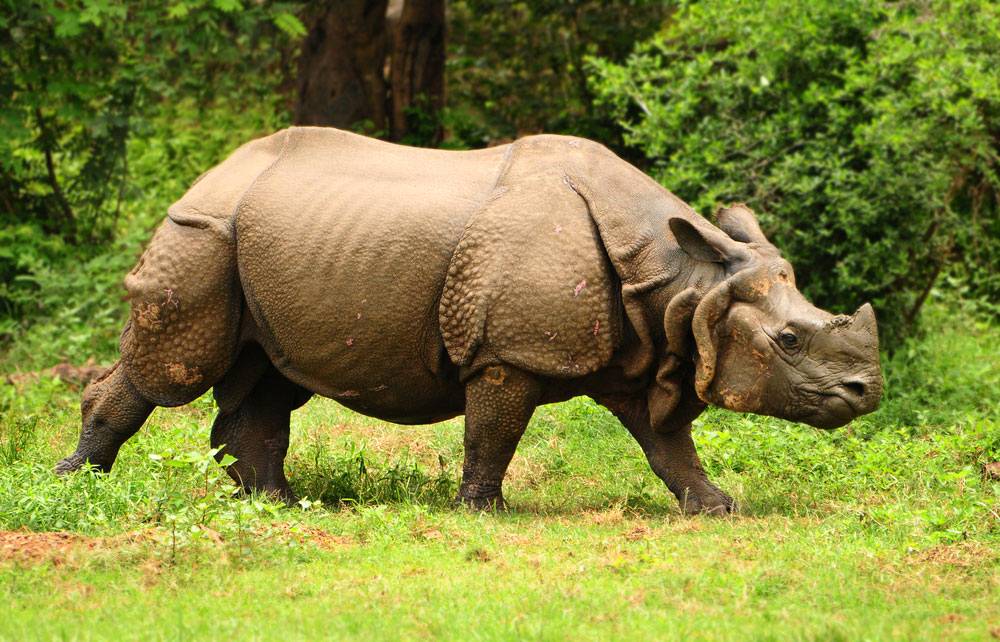Feature image: Great-Indian-one-horned-rhinoceros-at-Kaziranga-national-park-in-Assam-India by Mayank1704 – Own work, CC BY-SA 4.0, httpscommons.wikimedia.orgwindex.phpcurid=49547280
In the safe havens of Nepal, one may chance upon a creature reminiscent of the unicorn of legend. The story of Rhinoceros unicornis, commonly known as the greater one-horned rhinoceros, is one of conservation positivity, especially for a species whose relatives still lie dangerously close to extinction due to illegal take, habitat loss and fragmentation and climate change. Once classified as Endangered, conservation efforts have increased its numbers, resulting in the species’ downlisting to Vulnerable on the IUCN Red List.
Chitwan National Park is home to the majority of Nepal’s rhino population. Recently, researchers from Tribhuvan University, Nepal, noticed that the rhinos’ habitat within the park has changed. The eastern area of the park which was heavily populated by rhinos 20 years ago was largely abandoned in favour of the western region. For a species that has made such a strong recovery, could this be a new warning sign?
Rhinos prefer riverine areas, riverbeds and grasslands with scattered trees and dominated by wild sugarcane. They avoid dense forests—since their huge size affects their ability to move around—and humans as much as possible. Nearly two decades ago, both the eastern and western regions provided such habitat conditions, but the rhinos were now more abundant in the western region for unknown reasons.
So, what changed their preferred region of the park? In recent years, grasslands have reduced drastically in both the eastern and western regions due to human activities that have changed the landscape of Chitwan National Park. The building of dykes and spurs along the river reduced its intensity and altered its flow. As a result, dense forests started taking over the grasslands and the riverbanks became less “rhino-friendly”. Anthropogenic activities such as livestock overgrazing, incessant cutting of grasses, illegal take and settlement in rhino habitats further reduced the species’ habitat. As barren lands and dense forests started to replace the grasslands in the eastern region, the invasive “American rope” vine (Mikania micrantha) outgrew the native wild sugarcane, rendering the rhinos foodless.
The loss of their favoured grassland habitat and food source in the eastern region of the park caused the rhinos to move to the relatively untouched western area, which has an abundance of wild sugarcane and close proximity to water. However, the western region of the park has also experienced a drastic loss of grasslands and is vulnerable to losing wild sugarcane due to human interference and climate change. The latter also poses a threat to the riverine forests and water abundance—resources that make the habitat closest to the ideal one for rhinos.
The takeaway of this study is that simply declaring a region as a national park or a wildlife sanctuary is not enough to protect a species; maintenance of suitable habitat within the protected area is also needed. It took immense efforts to restore the greater one-horned rhinoceros’ population to a safe number after the last population decline. If the right measures are not taken now, all that conservation effort will be nullified. The crisis will return, and this unicorn may truly become an animal of myth.
Further Reading:
Kuikel, P. R. and K. Bassnet. 2023. Land use change pattern of the greater one-horned rhinoceros (Rhinoceros unicornis) in Chitwan national park of Nepal. Asian Journal of Conservation Biology 12(1): 66–72.






